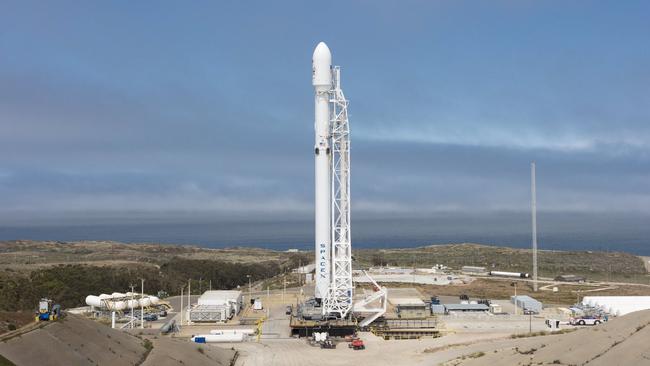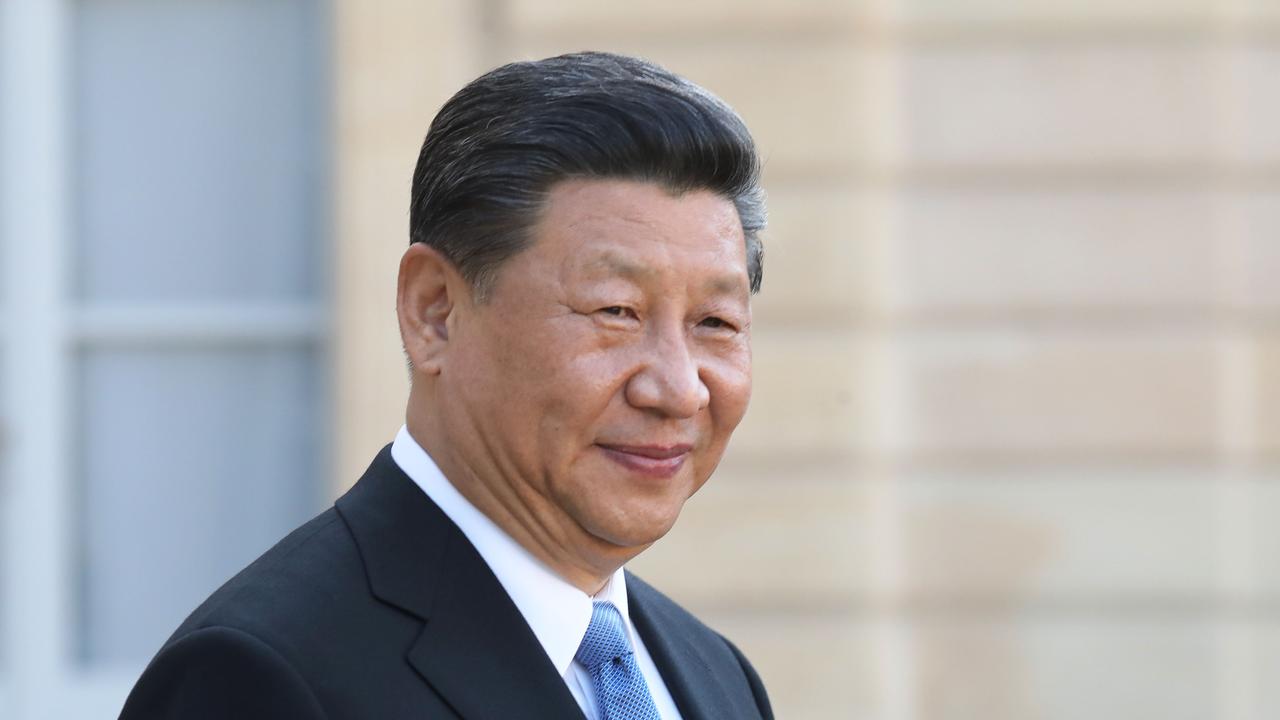Elon Musk’s SpaceX launches two rockets in 48 hours
Elon Musk’s company has pulled off two commercial satellite launches in its most compressed timetable yet.

Elon Musk’s SpaceX completed an impressive, bicoastal demonstration of launch capability yesterday, successfully executing the second of two unmanned missions within a roughly 48-hour period in a high water mark for the company’s operational prowess.
Parts of both rockets returned safely to floating platforms, repeating what has become a signature feature of company launches. The back-to-back launches went off without a hitch, with all engines and navigation equipment performing as expected and the SpaceX team, for the first time, smoothly juggling the demands of co-ordinating blast-offs and recoveries from opposite coasts of the US on such a compressed timetable.
After using previously flown main engines to blast a Bulgarian telecommunications satellite into orbit on Saturday (AEST) from a Florida launch pad, the closely held company yesterday used a California Air Force base to send a batch of 10 smaller satellites into space for Iridium Communications, SpaceX’s largest commercial customer.
Yesterday’s blast-off marked the shortest time between launches in SpaceX’s history. As the ninth launch of 2017, it also was a record for annual launches by the company, officially called Space Exploration Technologies Corporation.
SpaceX had eight successful launches in 2016, before an explosion during routine ground testing temporarily halted Falcon 9 launches. SpaceX has rebounded strongly since that accident, alleviating many of the reliability concerns expressed privately by government and industry officials.
But perhaps more than any previous benchmark, this weekend’s activities provided the strongest sign yet that SpaceX is on track to overcome years of nagging schedule slips by continuing to ramp up its launch tempo.
Amid cheers from company officials at SpaceX’s mission control centre in suburban Los Angeles, the blast-off paved the way for gradual deployment of the Iridium satellites over a 15-minute stretch that resembled an automated but graceful ballet in space.
Seven minutes after blast-off, the floating platform in the Pacific Ocean started receiving signals from the used booster streaking back toward the landing area. Video cameras captured the soft touchdown.
With an aggressive launch schedule, SpaceX officials are looking to rack up a total of roughly two dozen launches by the end of the year. Previous internal projections showed as many as 27 launches for all of 2017, nearly doubling to a total of 52 in 2019.
But the financial results of flying used boosters remain uncertain. Mr Musk and some of his top lieutenants initially projected huge price cuts. Then SpaceX officials talked about price reductions of slightly more than one-tenth of the $US62 million ($81.8m) official Falcon 9 launch price tag.
More recently, discussions about how SpaceX adjusts its launch schedule priorities — and how customers move up or down that list — has reverberated among rivals and industry officials tracking the company’s prices and activities.
Some of these officials have said that willingness or desire to fly satellites on refurbished boosters sometimes can help certain customers speed up dates for blast-off. But other factors in determining launch schedules include contract price details.
Juggling launch dates, which happens to a lesser extent with every rocket operator, is further complicated for SpaceX because it has to match customer technical needs with a range of rocket variants the company flies to orbit. And some commercial customers already have been frustrated by having to wait an extra year or two, sometimes even longer, for a ride to space.
A SpaceX spokesman said, “We determine when we launch our customers based on the dates included in their respective contracts and the availability of launch vehicles suited to their specific mission requirements.” Spokesman John Taylor also said: “It’s important to note that government customers will take priority in the manifest as required by contracts.”
Matt Desch, Iridium’s CEO, has made no secret of his willingness to accept refurbished boosters if that would speed up deployment of his 70-plus satellite constellation, which is expected to be completed by mid-2018.
Yesterday’s mission from Vandenberg Air Force Base, on the central California coast, comes at a particularly hectic time for SpaceX. After years of delays, the company plans to launch its significantly beefed-up derivative rocket, called the Falcon Heavy, for the first time later this year.
SpaceX teams are also working toward the initial test flight of a manned capsule, intended to routinely start transporting US astronauts to the international space station by the end of the decade.



To join the conversation, please log in. Don't have an account? Register
Join the conversation, you are commenting as Logout